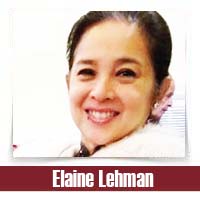
By: Elaine Lehman
In August 1945, the United States of America denotated two nuclear weapons over the populations of Hiroshima on August 6 and of Nagasaki on August 9, committing two of the most egregious and horrific crimes against humanity. The instant lethal effect of the use of these annhilative weapons in warfare caused tens of thousands of innocent people to boil incinerate and evaporate in seconds.
The real mortality of the atomic bombs that were dropped on Japan will never be known. The destruction and overwhelming chaos made orderly counting impossible. It is not unlikely that the estimates of killed and wounded in Hiroshima (150,000) and Nagasaki (75,000) are over conservative*
We remember their stories to inform and guide our future., particularly now. At a time when we are still facing a rise in racial hatred and bigotry against Asian Americans, the tragic bombings of Hiroshima and Nagasaki that took place seventy-six years ago, continue to inform us about the ugliness of white supremacy and arrogance.
The Truman administration knew of an impending Japanese collapse, Dwight D Eisenhower, the wartime Supreme Allied Commander in Europe who went on to become U.S. president, later admitted that ‘the Japanese were ready to surrender and we didn’t have to hit them with that awful thing’ (Newsweek, November 11, 1963). All of which begs the question, why did they do it?
“The only language [the Japanese] seem to understand is the one we have been using to bombard them. When you have to deal with a beast you have to treat him as a beast. It is most regrettable but nevertheless true.”
– President Harry S Truman, August 11, 1945, in a letter justifying his decision to drop the atomic bomb on the Japanese cities of Hiroshima and Nagasaki.
*(Source: Children of the Atomic Bomb, rsearch website project developed by Dr. James N. Yamazaki, UCLA professor emeritus of pediatrics, together with the UCLA Asian American Studies Center)



 VIA Times – August 2021 Issue Vital News, Vibrant VIews for Asian Americans in Chicago & Midwest
VIA Times – August 2021 Issue Vital News, Vibrant VIews for Asian Americans in Chicago & Midwest

